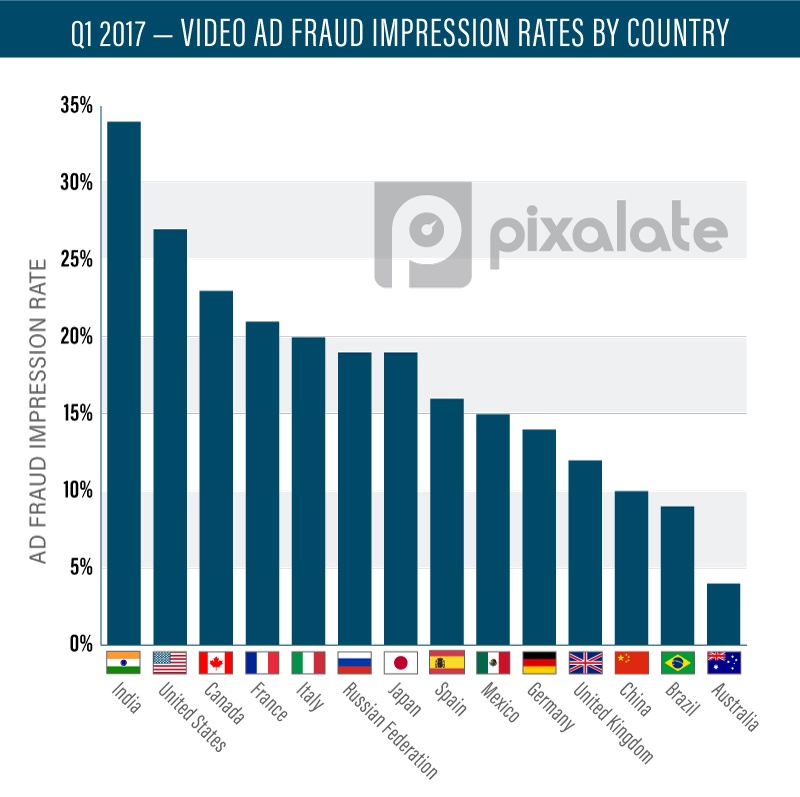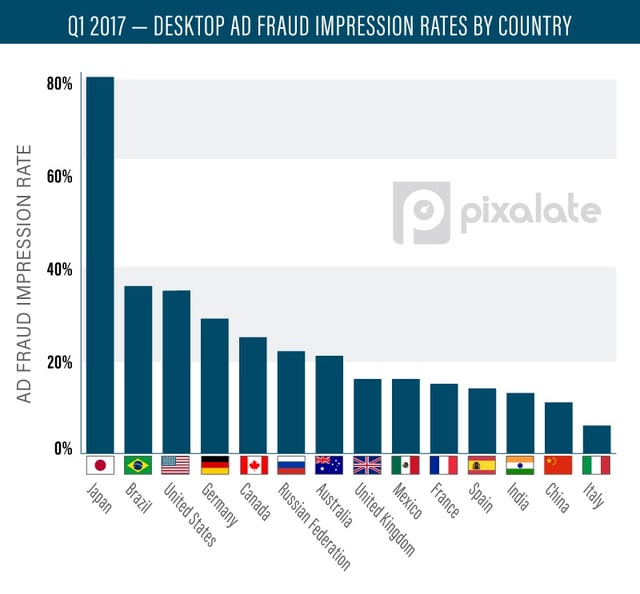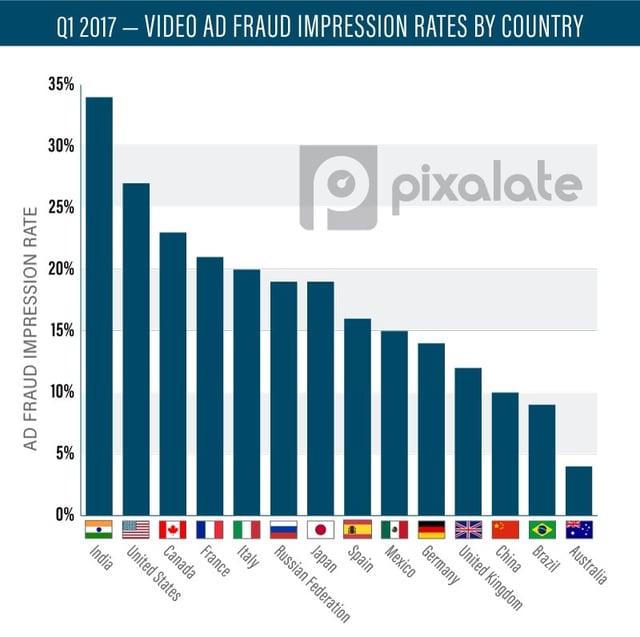
October 2, 2017 — By: Jessica Davies, Digiday
"Digital ad fraud remains rampant, costing marketers a small fortune and cheating publishers out of revenue," wrote Digiday before presenting four charts that display the current state of ad fraud.

"Japan has the highest ad fraud rates, according to a report from fraud prevention ad tech firm Pixalate," the article reads. "In the first three months of 2017, 81 percent of the programmatic impressions traded in Japan were fraudulent, with Brazil second at 36 percent. The U.S. was third with 35 percent of programmatically bought desktop ad impressions fraudulent during the same time period. The U.K., which has the third-highest volume of programmatic impressions available, had a fraudulent desktop impression rate of 15 percent, according to the same report."

The article continued: "Fraudsters go where the money is. Video accounts for 45 percent of spending and is responsible for 64 percent of ad fraud, while programmatic video is a particular problem child, accounting for 67 percent more fraud than direct video, according to Forester. India has the highest fraudulent video ad impression rates at 34 percent, with the U.S. taking second place at 27 percent, according to Pixalate’s Ad Fraud Benchmark report. The U.K. had a video ad fraud rate of 12 percent."
Read the full article in Digiday.
Sign up for our blog to stay updated with new stats, trends, and analysis on digital ad fraud.
*By entering your email address and clicking Subscribe, you are agreeing to our Terms of Use and Privacy Policy.
These Stories on Thought Leadership
*By entering your email address and clicking Subscribe, you are agreeing to our Terms of Use and Privacy Policy.

Disclaimer: The content of this page reflects Pixalate’s opinions with respect to the factors that Pixalate believes can be useful to the digital media industry. Any proprietary data shared is grounded in Pixalate’s proprietary technology and analytics, which Pixalate is continuously evaluating and updating. Any references to outside sources should not be construed as endorsements. Pixalate’s opinions are just that - opinion, not facts or guarantees.
Per the MRC, “'Fraud' is not intended to represent fraud as defined in various laws, statutes and ordinances or as conventionally used in U.S. Court or other legal proceedings, but rather a custom definition strictly for advertising measurement purposes. Also per the MRC, “‘Invalid Traffic’ is defined generally as traffic that does not meet certain ad serving quality or completeness criteria, or otherwise does not represent legitimate ad traffic that should be included in measurement counts. Among the reasons why ad traffic may be deemed invalid is it is a result of non-human traffic (spiders, bots, etc.), or activity designed to produce fraudulent traffic.”

